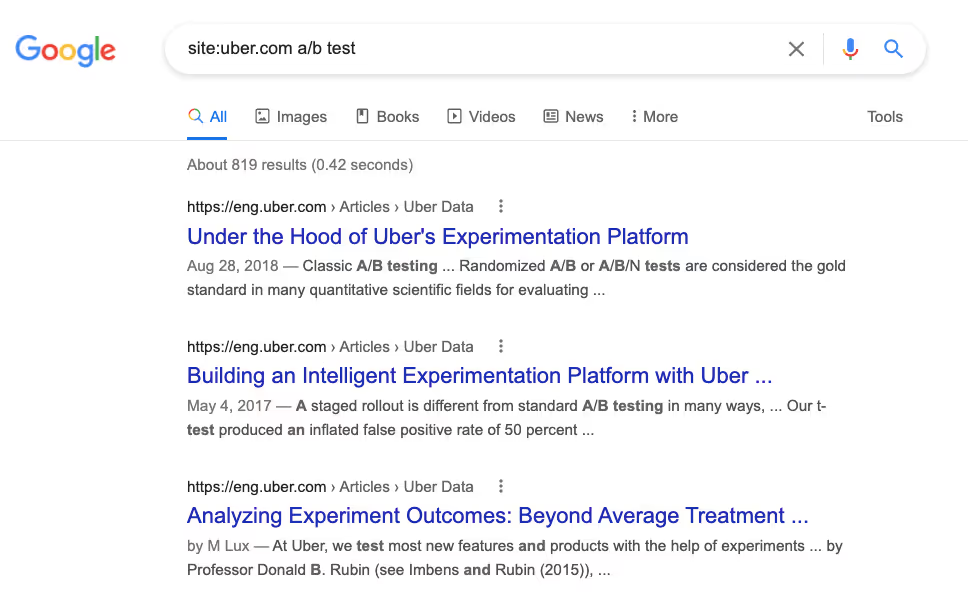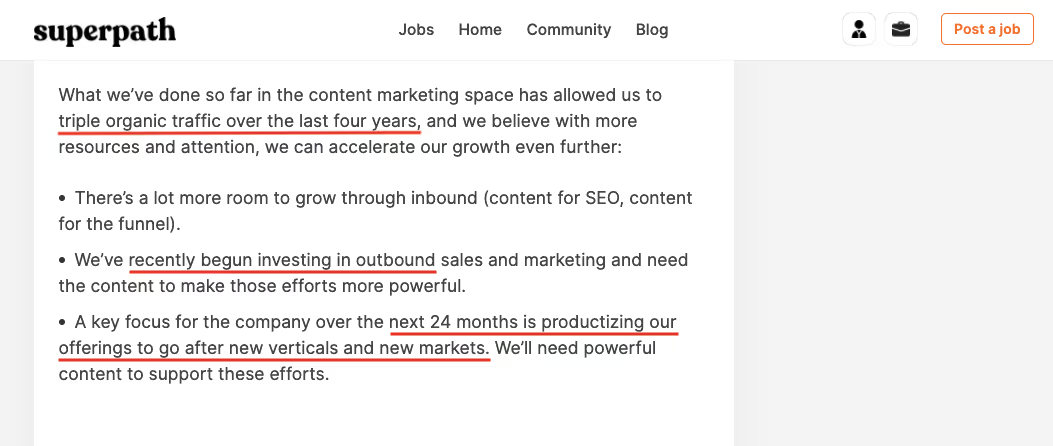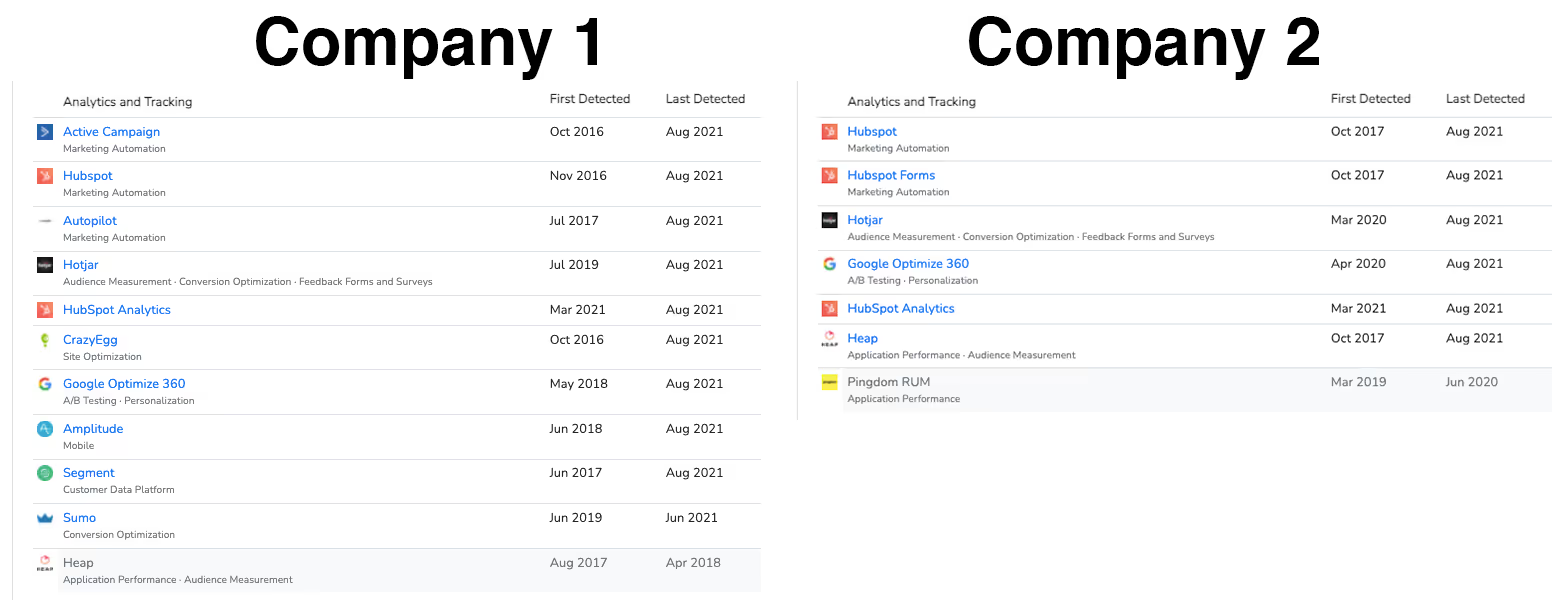
Conversation

Understanding Your Competitors
Most problems can be solved in a variety of ways. Chances are some of your competitors approach the same problem you tackle in a different way or solve it for a different group of people.
Because of this, there are two kinds of competitors:
- Direct: Companies that target the same customer base as you and use a similar solution to solve the same problem.
- Example: Uber and Lyft are direct competitors. People can consider either for hailing rides.
- Indirect: Companies that sell something similar to your product but target a different audience, or target the same audience with a different product. There are a few different types of indirect competitors, which we’ll get into later.
Direct competitors aren’t the only ones you should research. Indirect competitors, specifically those with a similar business model and audience, are just as important.
But direct or indirect, not all companies are dedicated to growth experimentation—which means not every competitor will be worth studying. To filter out these companies, grade them based on their quality, rigor, and relevance.
Quality
Low-quality companies won’t get you very far in terms of growth learnings. For more practical insights, focus your research on high-quality companies. You can judge companies using these three metrics:
- Revenue: High revenue often speaks to a company’s growth success, even if they’re not profitable. If company revenue data isn’t publicly available, fundraising makes a good proxy. Look for companies that have received lots of funding from reputable investors.
- Size: Quality companies tend to be bigger, since a larger company size may mean that whatever they’re doing is working well enough to bring on more employees. A good rule of thumb for judging size: look for businesses that have expanded beyond their founders. From our experience, startup teams that have grown to 30-50+ people tend to be more developed and of higher quality.
- Growth track record: Companies that have had long-term, sustainable growth, like Amazon and Uber, tend to provide more reliable growth insights than early stage companies. Why? There may be hidden factors behind early stage companies’ success or external factors out of their control.
- Consider how the social audio app Clubhouse took off in its first year, with nearly 10 million downloads in February 2021. Two months later, downloads dipped by 89%. Given its short-lived growth, Clubhouse probably isn’t so reliable for growth insights.
The best companies to study hit all three: high revenue/funding, a team with employees beyond the founders, and a consistent history of growth.
Important note: Company quality is less important when you're trying to define or optimize your value props and brand messaging. In this case, other early stage companies are better for research, especially those receiving a lot of press or that have raised some money.
As new companies, these startups usually haven’t grown much yet, so they’re not useful for getting growth learnings—but there’s a reason they’re getting attention. Study them to find out their value props and get inspiration for how to differentiate your own. (We cover this in more detail in our Value Props unit.)
Rigor
We use “rigor” to describe how dedicated a company is to growth experimentation. Competitors that clearly invest in this are better for your research because they’re not just taking guesses—they’re using the scientific method to figure out what works.
You can find out a company’s level of rigor through these three indicators:
- Public experiment results: Some companies, like Pinterest and Uber, have blog posts dedicated to experimentation. Do a quick site search of your competitors and phrases like “A/B test” and “experiments” to see if any of this is public.

- Growth roles: Check out competitors’ LinkedIn pages to see if there are team members or open positions dedicated to growth, experimentation, or CRO. This includes not only growth marketers, but also engineers and data scientists. Bonus: Some job descriptions also give away a lot of marketing/product strategy, even future plans—in other words, lots of free insight.

- Experimentation software: Use BuiltWith to find out what paid analytics and experimentation software companies are using on their website. Look at BuiltWith’s Detailed Technology Profile tab to see whether/how long this software has been active. Companies that are dedicated to experimentation often invest in more software and are running it on an ongoing basis.

Not all companies openly share about their growth experiments, so how dedicated one is to experimental rigor isn’t always obvious. Prioritize studying businesses that show at least two of these three indicators.
Relevance
Remember that competitor research isn’t only about looking at direct competitors—you should also study indirect ones.
Some indirect competitors are more relevant to your company than others. Here’s how to classify them:
- Different solution: Companies that solve the same problem for the same customer, but in a different way. Example: Workout subscription programs like DailyBurn offer a different solution from gym memberships. They target the same audience but offer an alternative solution to getting in shape.
- Different problem: Companies that solve a different problem for the same customer using the same solution. Example: Uber Eats sells to the same customers as Uber using the same technology, but it solves a different problem (food delivery).
- Different customer: Companies that solve the same problem in a similar way, but for a different set of customers. Example: Tinder and Raya are both online dating apps, but while Tinder targets young singles in general, Raya focuses more on celebrities and high-profile people.
Indirect competitors with a different solution tend to be the most relevant and worth researching. That’s because even though your solutions are different, having the same problem and customers means these competitors face the same consumer mindset and psychology as you. The tactics that work for them are most likely to work for you as well—study them to find out why their solution might appeal more to customers than yours.
Competitors with a different problem but the same solution and customer are next best for research because they may be a threat to your company, especially if they leverage their product to enter your space. Consider how Uber tapped into its drivers to launch Uber Eats, a competitor to DoorDash and Grubhub.
Finally, competitors with different customers are usually the least relevant. If their strategy applies to an entirely different market (one with a different psychology), you shouldn’t expect it to work for yours.


